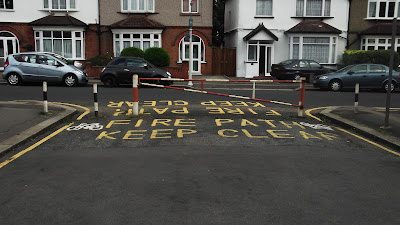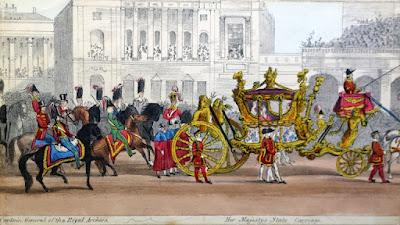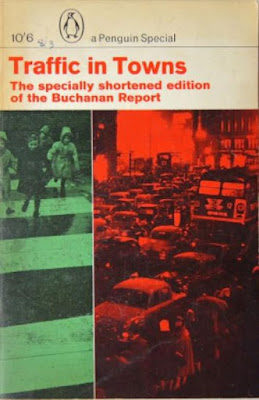Aside from the odd regulatory tweak such as low level traffic signals and parallel zebra crossings, the UK already had the tools needed to manage its highway networks all along - we just sometimes call them different things.
Low Traffic Neighbourhoods (LTNs) is a term which has been coined in the last few years, but the principles and ability to deliver them are nothing new. In 2016, I worked on an experimental scheme to deliver a signal modal filter to a street which was being used by drivers to bypass a section of trunk road which was congested at peak times. The scheme was really the last piece in a jigsaw which started in the early 1970s with the rest of the state.
Cheap, not pretty, but it did the job for an experiment.
I am currently researching other schemes in my area (LTNs and other things) and so far I have found experimental traffic orders being used as far back as 1965 banning turns (1965 being the year the modern London boroughs were established). This old experiment was made under the Road Traffic Act 1960 which I think was the first piece of legislation that allowed the experimental process. There was then lots of activity through the 70s when many streets were filtered to keep through traffic on main roads.
An example of an early 1970's modal filter.
The 1960 Act had specific clauses relating to experimental schemes in London, although here we predate the modern London boroughs and so the traffic authority was actually the Metropolitan Police which could make orders with approval of the Transport Minister. For other parts of the country, it seems that the 1960 Act was also used, but on application to the Minister. On the establishment of the modern London boroughs and the Greater London Council (GLC), the traffic authority powers transferred to the GLC for Greater London.
I have been digging around the The Gazette where lots of public notices of all kinds are advertised and amazingly, I have found an experimental traffic scheme in Slough from April 1955 which used the even earlier London Traffic Act 1924, although this was for a parking management and a one-way traffic scheme which now seems to be part of a long pedestrianised part of the town. Anyway, my search for "experimental traffic" can be viewed here.
LTN schemes (whether experimental or not) create "prescribed routes" which is the legal definition of which classes of traffic may pass or proceed (although some authorities describe things a little differently). The search for "prescribed route" is even more astonishing. The earliest record I could find is from June 1838 and related to traffic management (carriages) for the coronation of Queen Victoria - it was required for:
"securing the commodious access and return of carriages conveying persons to and from Westminster Abbey, on the occasion of Her Majesty's Coronation."
Have a read of it. The language and how the routes were kept clear contain language which will be rather familiar to anyone who has read a traffic order. This is essentially a temporary traffic order for an event!
OK, Queen Victoria's coronation was not linked to LTNs. Searching through the records under "prescribed route", we find lots of references which give powers to corporations building waterworks, tramways and other infrastructure to make byelaws which prescribe routes for traffic (with references to hackney carriages and omnibuses for example). In the 1930s, there are lots of roads having speed limit changes and actual modern ideas of prescribed routes such as a section of one-way working on Lea Bridge Road in London (in fact, one-way systems seem to have been very popular in 1930s London, along with roundabouts).
I have also been using "prohibition of traffic" as a search. Again, plenty of references to things being done to facilitate motor traffic flow because of road schemes. I have found a 1957 reference to the prohibition of traffic in High Lane, Hanwell (Borough of Ealing at the time), but it's not an LTN. As with prescribed routes, there are lots of prohibition of traffic orders linked to the construction of road and (motor) traffic schemes and trying to find something which fits the LTN bill seems to be really difficult.
April 1960 has an interesting reference to the centre of Horsham where a prohibition of traffic order essentially establishes a pedestrianised area in the the town. However, although there are some servicing exemptions, I think cycling is banned (as vehicles) which for my mind doesn't qualify it as an LTN and there are certainly "no cycling" signs in the pertinent area today.
In truth, it's probably not going to be possible to find the traffic order which established the first LTN as we might know the concept, but once we get into the mid 1960s we start to see things which are more familiar. In 1963, Mainway in Lancaster was closed to vehicles at its junction with Owen Road, although like Horsham, the order doesn't seem to have a cycling exemption.
In 1964, Canterbury City Council sought to stop driving over the Whitehall Bridge Road railway bridge which today is filtered and maybe creates a local LTN. We can't tell from The Gazette what the "why" was for the closure. It may have been the structural integrity of the railway bridge or maybe the newer residential area would have generated too much traffic heading across it to the city centre.
Traffic in Towns (from the Urban Design Group)
In the 1963 Traffic In Towns report by Professor Colin Buchanan, the idea of the "environmental area", somewhere free from external traffic was established. This really is the original term for what we now call an LTN and it is no coincidence that this is really where we see the idea starting to spread. The urban planning profession was starting to understand the impact that traffic was having and maybe the coining of "environmental area" was a way of consolidating the things we had been doing since the 1930s in the same way that LTNs have consolidated the thinking of the early 21st Century.
The Railton LTN, installed as an experiment in 2020,
now being made permanent.
Although we recognised the need to deal with through traffic in residential and local areas in the early 1960s, we also carried on with our big urban road schemes as well as expanding motorways that spat out traffic at each end. In the 2020s, we are living with that legacy which has subsumed local streets as the "pressure valve" lauded by high traffic proponents. In other words, we have used up capacity on main roads designed for through traffic and allowed it to expand unchecked into side streets.
The other parallel is there is still a push for large road capacity upgrade schemes which will but additional pressure on local streets. It seems we have understood the issues for a very long time.






No comments:
Post a Comment